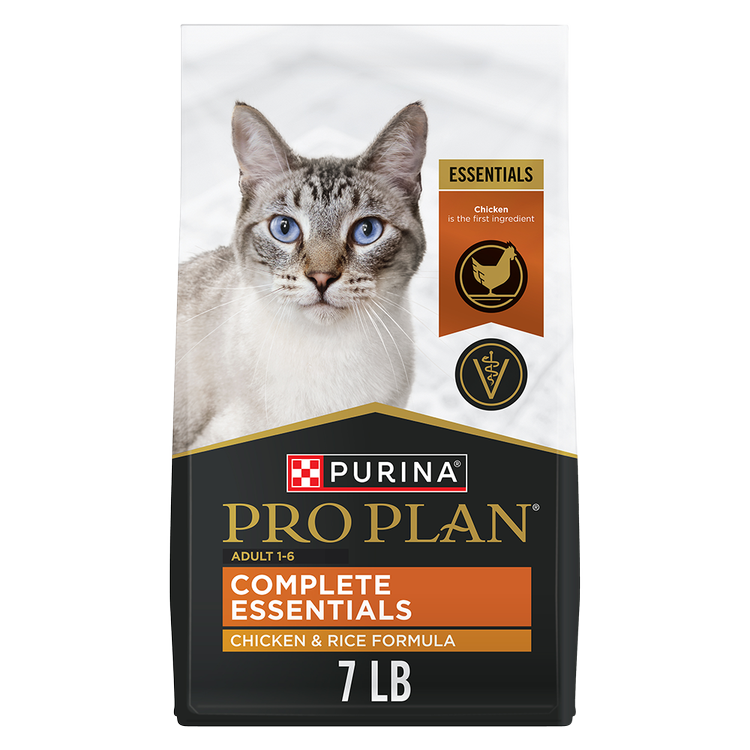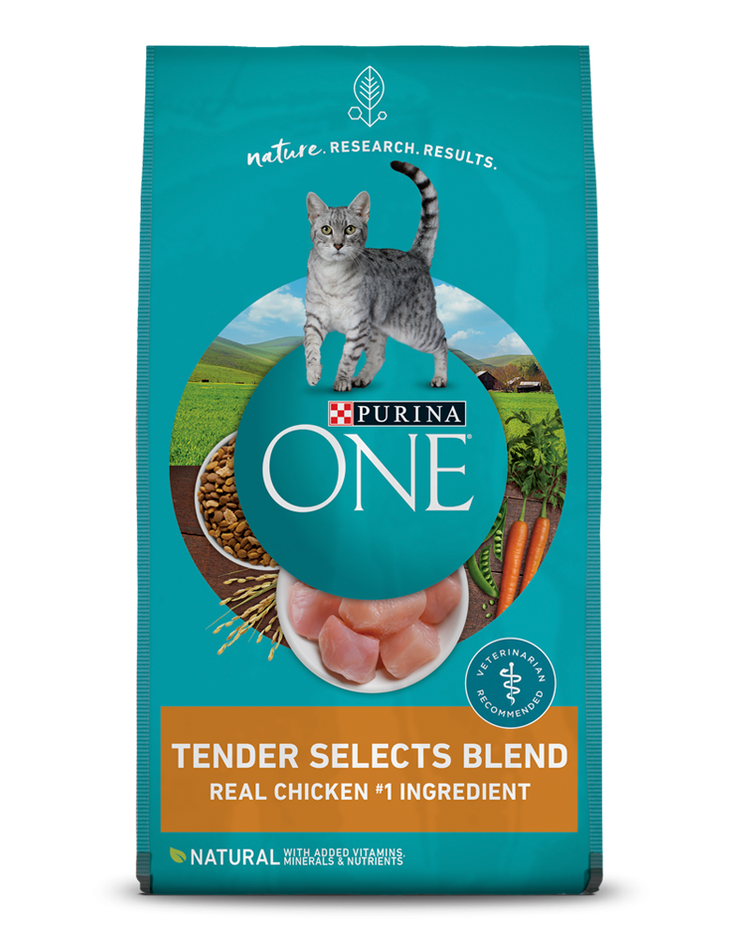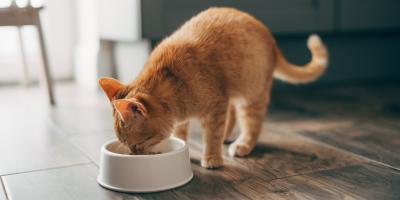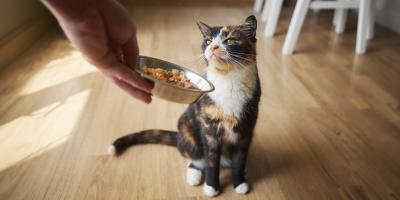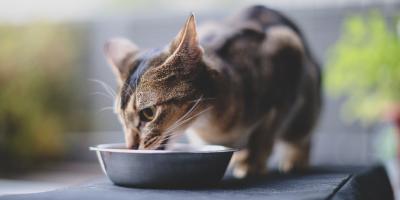Can Cats Eat Chocolate? A Guide to Safety


You may be wondering, Is chocolate OK for cats? Chocolate is toxic for cats and can even turn fatal if they ingest too much. Although eating chocolate is less common with cats compared to dogs, some kitties get a taste for chocolate. This is especially true with any kind of milk-based chocolate drink, like hot cocoa. That is why it is so important to keep a close eye on your furry loved one when chocolate is easily accessible for your cat.
Why is Chocolate Bad for Cats?
Chocolate and cocoa contain methylxanthine compounds, theobromine and caffeine, which are toxic to cats if they are consumed. These ingredients might be naturally metabolized by humans, but not by cats. Since a cat’s system processes these constituents slowly, this can lead to a buildup of these substances causing serious symptoms, including liver failure. Even a small amount can make your kitty incredibly ill.
How Much Chocolate is Toxic for Cats?
The toxic dose of theobromine in cats is 200 milligrams per kilogram (about 0.0032 ounces per pound). The darker and more bitter the chocolate, the more dangerous it becomes to cats. For example, an 8-pound cat can get equally sick from 0.2 ounces (about 5.67 g) of baker’s chocolate as they could from 1.1 ounces (about 31.18 g) of milk chocolate. That is because the concentration of toxic compounds varies among different types of chocolate. To get a better idea, here is a list of several types of chocolate in order of their theobromine content:
- Cocoa beans/Cocoa powder (most theobromine and most toxic)
- Unsweetened cocoa powder/Unsweetened baker’s chocolate
- Semisweet chocolate
- Dark chocolate
- Milk chocolate
- White chocolate (least theobromine and least toxic)
Remember that even a tiny bit of chocolate can become poisonous for your cat. Therefore, it is always good to call a vet if you suspect that your cat ate something they shouldn’t have, such as chocolate.
Knowing what kind of chocolate your cat ate and how much they ate will be able to help you and your vet determine how serious the situation is.
The following chart shows the minimum amount of chocolate that must be consumed before chocolate poisoning will occur in an 8-pound cat according to which type of chocolate they eat:
| Type of Chocolate | Minimum Amount That Can Be Toxic to an 8 lb. Cat |
| Cocoa beans/Cocoa powder (most toxic) | 0.07 oz (or 1.98 g) |
| Unsweetened cocoa powder/Unsweetened baker’s chocolate | 0.2 oz (or 5.7 g) |
| Semisweet chocolate | 0.5 oz (or 14.2 g) |
| Dark chocolate | 0.5 oz (or 14.2 g) |
| Milk chocolate | 1.14 oz (or 32.3 g) |
| White chocolate (least toxic) | Usually not a concern. A cat will need to consume around 50 oz (or 1417.5 g) to reach toxicity levels. |
Regardless of the amount of chocolate your cat has eaten, it is always best to contact a vet immediately to see if your cat will be alright or if they will need to be treated for chocolate toxicity. Remember that even a small amount of chocolate can make your cat severely ill, and they can die if they ingest too much.
Symptoms of Chocolate Poisoning in Cats
You may be wondering, How long after a cat eats chocolate will symptoms show? Chocolate poisoning in cats can occur within the first 6-12 hours and can last up to 3+ days in severe cases. Some of the signs of chocolate poisoning in cats that could occur during this time frame include the following:
- Restlessness
- Hyperactivity
- Tremors
- Muscle rigidity
- Weakness
- Panting
- Increased thirst
- Vomiting
- Diarrhea
- Frequent urination
- Low blood pressure
- Increased rate of breathing
- Increased body temperature
- Irregular/Increased heart rate
- Seizures
- Loss of consciousness
- Coma
If you think that your cat ate chocolate, immediately reach out to your vet or call the Animal Poison Control Center (APCC) at (888) 426-4435 for assistance and support.
What to Do if Your Cat Ate Chocolate
If you notice or suspect that your cat has eaten chocolate, it is important to follow these steps as soon as possible even if they are not showing any symptoms yet:
- Keep an eye on your cat. If your cat has eaten chocolate, it is crucial to keep a close eye on them for 24 hours or so. If you have an outdoor cat, try to keep them inside during this time to ensure that they do not develop any symptoms. Keep all doors and windows closed, watch out for your cat as you come and go from the house, and try to keep your cat contained to one or a few main area(s) during this time.
- Contact a vet immediately and tell them all the facts that you know. If you have the candy wrapper and/or box at hand when you call, this can provide your vet with further details about the type of chocolate eaten and roughly how much your cat ate. Although your vet should have this information on record, you should still provide your vet with the size and weight of your cat. These details can determine how much danger your cat might be in from chocolate poisoning.
- Get your cat to a vet for treatment ASAP. The sooner your cat is treated, the higher the chance they will recover without incident. After your initial contact with your vet, let them know you will be there with your cat right away. If your vet thinks your cat is at high risk of chocolate poisoning, then they might choose to induce vomiting at the clinic. If this does not work, then they might try to give your cat medications to induce vomiting and/or activated charcoal to bind and absorb any toxins left over in the worst-case scenario. Never try to induce vomiting on your own at home without the advice of a professional vet. If your cat begins to exhibit worse symptoms, then your vet will start a series of treatments, including IV fluids, gastrointestinal (GI) support, ECG heart test, blood pressure monitoring, antiarrhythmic drugs and more.
- If your vet is not available, call the local emergency veterinary clinic or the Animal Poison Control Center (APCC) at (888) 426-4435. The APCC will be able to provide advice on what you can do for your cat at home, whereas the emergency vet clinic will be set up to properly treat your cat, especially if the chocolate toxicity has become severe.
Contacting your vet and getting your cat treated right away will always be your best bet to saving your loved one from any serious or fatal, long-term complications.
Healthy Snacks to Give Your Cat Instead of Chocolate
Even though chocolate is bad for cats, this does not mean that there aren’t alternatives you can give which are more appropriate for your adorable furball. Here is a list of treat ideas for your cat on those days you want to give them something special:
- There are many safe, approved and specially formulated cat treats that they can eat without you worrying about them getting sick.
- There are other types of human foods that your kitty can eat without any cause for concern.
- There are safe, edible plants that are popular with most cats, such as cat grass and catnip.
- There are also special holiday treats and gifts and holiday recipes you can give your cats during those magical times of the year.
- You can even give your loved one non-edible gifts, such as a feather wand toy, interactive treat dispenser, a catnip toy, an enriching game and other types of cat toys.
If you do your research, you should be able to find many healthy alternatives for your cat to love. The best rule of thumb is to stick with cat-approved treats made specifically for kitties. This way you can keep your buddy happy, and everyone can enjoy their special treats and gifts together without anyone getting sick.
Tips on How to Keep Chocolate Away From Your Cat
Below are a few preventative ways to keep your cat away from chocolate:
- Keep the chocolate out of reach. Watch out for food that has chocolate in it, such as chocolate ice cream and chocolate chip cookies, as well as purses or treat bags with chocolatey treats inside. The best thing you can do is put anything with chocolate in a place where you know your cat cannot reach. This might include high up places, behind closed pantry doors, or in another place where you know your cat has never been able to get into no matter how hard they try.
- Put a lid on it. If you have chocolate milk or another milky chocolate drink, make sure to keep a lid on the mug so that your cat cannot get into it. It is also best to always keep your cocoa drink near you and in sight in case Houdini kitty decides to knock over your cup to drink their fill.
- Redirect your cat. If your cat is starting to head curiously towards that chocolatey goodness, then redirect their attention towards a toy or some other cat-approved item that will keep them distracted and away from anything that can harm them.
- Research other various safety precautions. There are many safety precautions you can take for your furry feline. This includes protocols you can follow during holidays, such as Christmas or Halloween.
For more expert tips on cat feeding, explore our other What Can Cats Eat articles.
Related articles

Find Your Pet’s Perfect Food
Get a personalized recommendation from Purina nutritionists with our Pet Food Finder.

